Following
the re-excavation of the summer house much of June was given over to a
detailed stone by stone drawing of the foundations and a careful
recording of the archaeological contexts identified. We then moved on
to survey the cascade itself including a plan of the stonework,
sections through the cascade and elevations of the 'facade'. This work
has been quite challenging as some of the stonework is very fragile so we
have had to use remote methods of surveying to avoid risk of collapse.
We have also had to be sensitive to fact that the cascade is home to a
variety of animal and plant life including a population of grass snakes
and a colony of shrews so we have tried to keep interventions to the
minimum. Work also began on a site plan of the immediate environs and
surveying the lie of the land between Sourland Pool and the cascade.
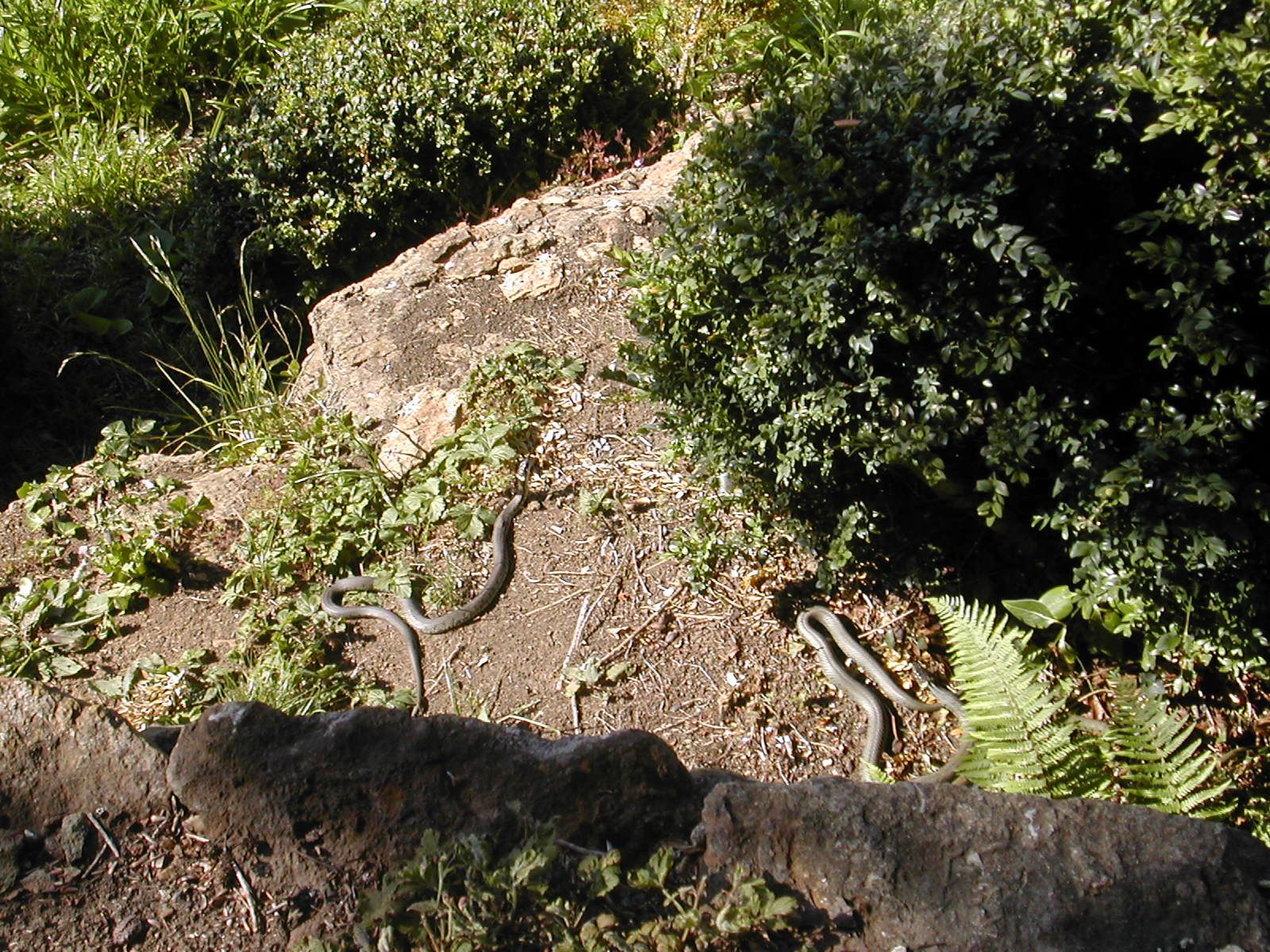
Grass snakes basking in the sun on the cascade, there are actually three of them in this photo if you look hard. Does this constitute a plague? The same day, July 14th., I saw another magnificent specimen stretched
out on the gravel path down to the Cascade. Must be a good year for snakes.
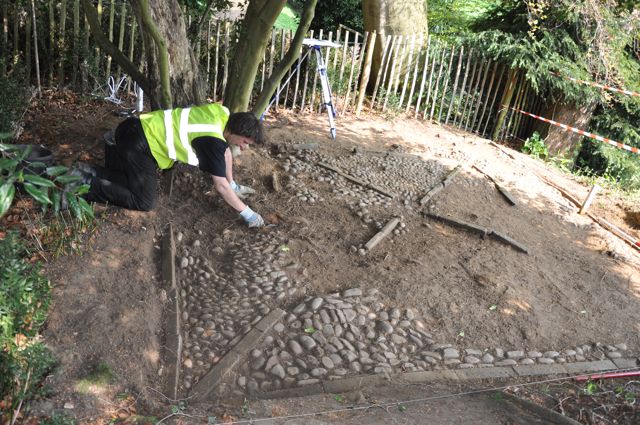
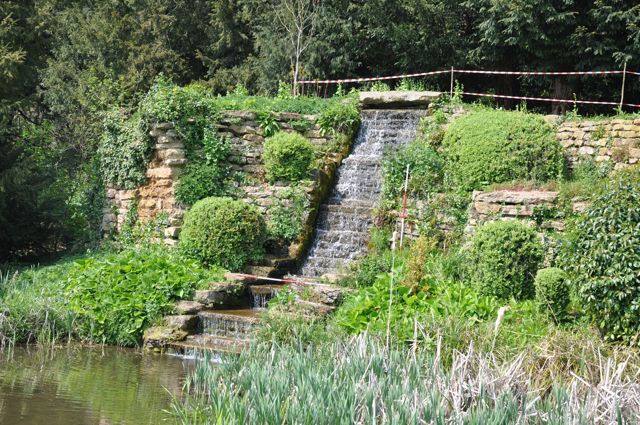
The summerhouse foundations looking E Plan of the summerhouse The Cascade from the SE
click here to see the detailed plan and list of contexts
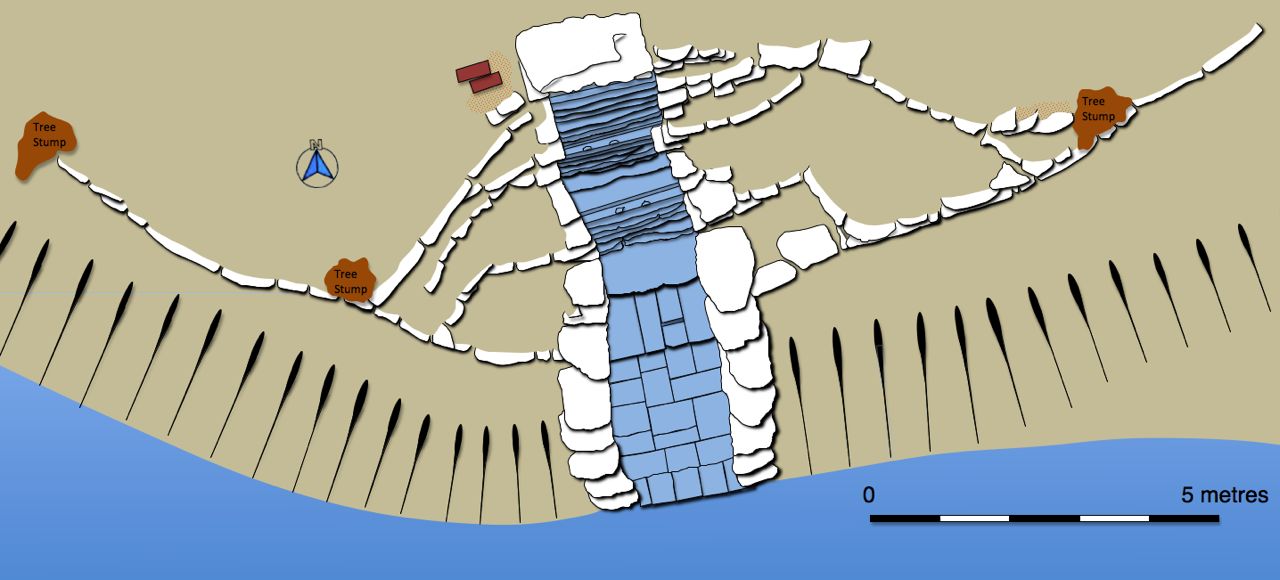
... and here's the plan view of the cascade.
One of the most remarkable discoveries so far is a feature in the Stanborough Woods above Sourland Pool which we have christened 'The Amphitheatre'. This is a large circular terrace backed on the uphill side by a massive earth bank with a ditch on the outside with the down hill margin being defined by a deep curving ditch. This area is shown on the 1772 estate map as two crescent shaped areas of planting but the scale of the earthworks suggests something a little more complex. More elaborate amphitheatres are found at Claremont in Surrey where these is a feature designed by Bridgeman in the 1720's and at Wilton House, Wiltshire thanks to the work of De Caus in the mid-seventeenth century. There has also been a report of an 'amphitheatre' at Hanbury Hall in Worcestershire, however, when I went over to take a look the truth was much stranger. Read about it here.
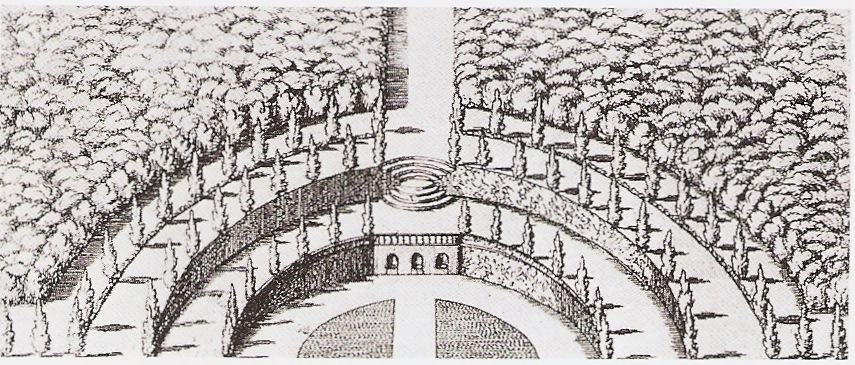
The Amphitheatre at Wilton House from 'Le Jardin de Wilton' Isaac De Caus c. 1645
If
this is a similar feature it is something of a rarity in English
garden design
and will certainly repay further study. At this point accessing the
site was a real 'Indiana Jones' operation as it was heavily buried in the
undergrowth which included chest high nettles of a particularly
virulent nature. We
plan a detailed earthwork survey in the autumn once the vegetation
starts to die back, however, by braving unknown hazards it was possible
to prepare a sketch plan based on compass bearings and pacings and draw
some rough profiles using a 2 metre ranging rod to prod through the
undergrowth.
And now for something quite different:
And now for something quite different:
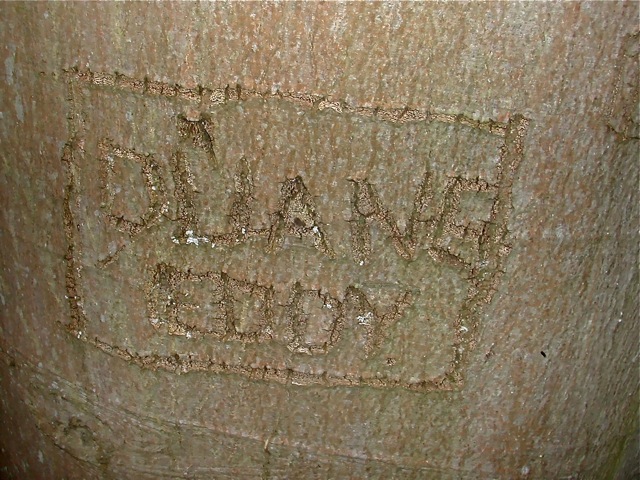 | 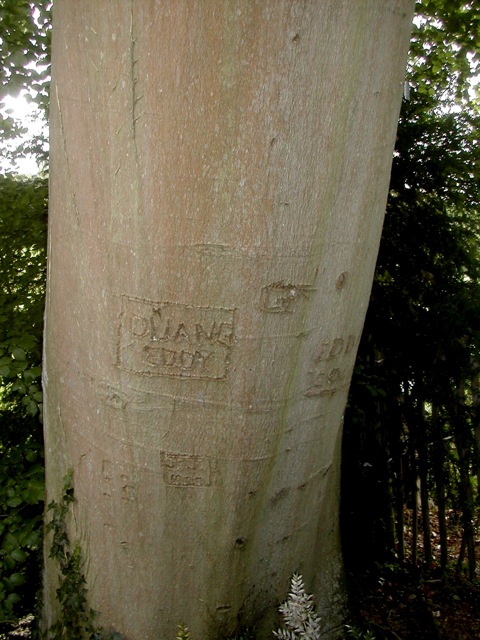 | 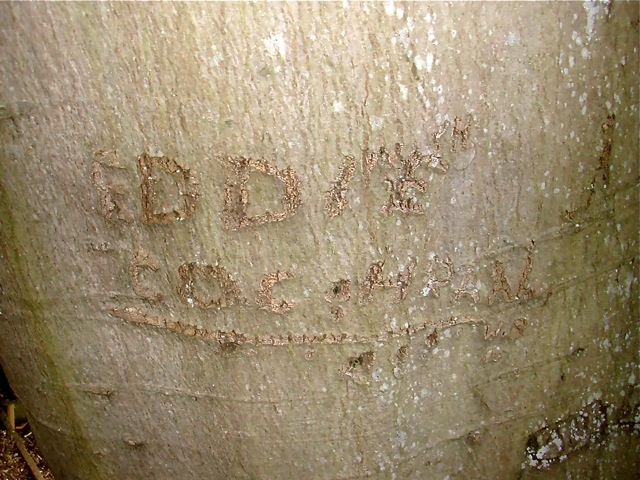 |
So what kind of evidence is this? Carved into the trunk of an ancient beech tree just to the east of the cascade are the the names of two rock and roll legends: Duane Eddy and Eddie Cochran. A tribute from a grieving fan perhaps, Cochran was killed in a road traffic accident in Chippenham whilst touring this country in 1960, that can't be right, Duane Eddy is still alive. A joke perhaps, but there again the two were both in the country in 1960 but they couldn't possibly have visited Farnborough Hall... could they? But then round the other side of the tree we find. 'Cliff Richard and the Shadows'. Now this whole thing is really getting out of hand. It seems clear that what we have here is a kind of rock and roll tribute tree but who carved these names? Given the date of Cochran's death and the fact that the Hall was given to the Trust in the same year is this an example of a visitor or group of visitors wishing to make their mark? | ||